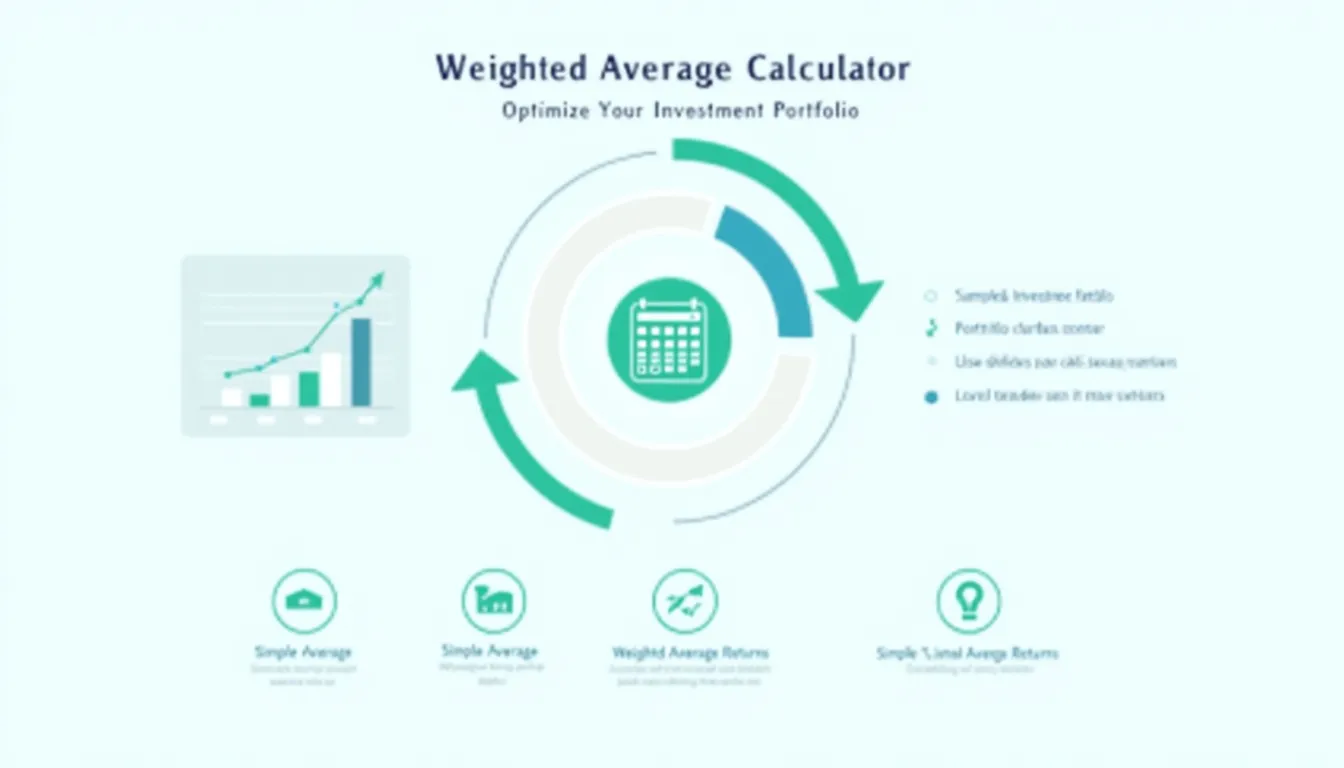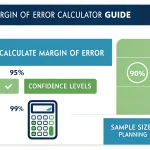Weighted Average Calculator
Tip: Enter the ratio and rate for each investment. The ratio represents the proportion of each investment, and the rate is the return rate for that investment.
Is this tool helpful?
How to use the tool
- Input your first weight: Type 0.40 in “Ratio 1” to represent 40 % of the total.
- Input its value: Type 8 in “Rate 1 (%)” for an 8 % return.
- Add more rows: Click “Add Input” and add 0.35 with 4, then 0.25 with -2.
- Press Calculate: The tool shows the weighted average instantly.
- Interpret the result: A 4.10 % weighted return means the combined portfolio earns 4.10 % annually.
Formula used
$$\text{Weighted Average}= rac{\sum w_i x_i}{\sum w_i}$$
Worked example (investment)
- Weights: 0.40, 0.35, 0.25
- Values: 8 %, 4 %, −2 %
- Calculation: (0.40·0.08)+(0.35·0.04)+(0.25·−0.02)=0.041
- Total weight: 1.00 → Result: 4.10 %
Worked example (GPA)
- Credits: 3 and 5
- Grades: 3.7 and 3.0
- Calculation: (3·3.7+5·3.0)/(3+5)=3.26 GPA
Quick-Facts
- Modern Portfolio Theory weights assets by capital share (Markowitz, 1952).
- Credit-weighted GPA is the U.S. admissions standard (College Board, 2023).
- Bloomberg Barclays U.S. Aggregate Bond Index weights > $25 trn of debt (Bloomberg Factsheet, 2023).
- ISO 5725 recommends weighted means for interlaboratory bias correction (ISO, 2020).
FAQ
What is a weighted average?
A weighted average multiplies each value by its weight, sums those products, then divides by the sum of weights (NIST Handbook 44, 2022).
Why prefer it over a simple average?
Weighted averages reflect each component’s importance; simple averages ignore size differences, skewing results for unequal datasets (Ross et al., Corporate Finance 12e).
Do weights have to add to 1?
No. The formula normalises automatically; only the denominator uses the total weight.
Can weights be negative?
Yes. Negative weights model short positions or losses, provided the interpretation fits your scenario (Hull, Options & Futures 10e).
How does the tool handle percentages?
It converts your “Rate (%)” entries to decimals—8 % becomes 0.08—before calculation.
Is the calculator accurate?
It uses IEEE-754 double-precision arithmetic, accurate to roughly 15 significant digits (IEEE Standard 754-2019).
Can I export results?
Copy the on-screen numbers or use your browser’s print-to-PDF function for records.
Where else is this math applied?
Credit ratings, index construction, risk-weighted capital ratios, and survey scoring all rely on weighted averages (BIS Basel III Guide, 2021).
Important Disclaimer
The calculations, results, and content provided by our tools are not guaranteed to be accurate, complete, or reliable. Users are responsible for verifying and interpreting the results. Our content and tools may contain errors, biases, or inconsistencies. Do not enter personal data, sensitive information, or personally identifiable information in our web forms or tools. Such data entry violates our terms of service and may result in unauthorized disclosure to third parties. We reserve the right to save inputs and outputs from our tools for the purposes of error debugging, bias identification, and performance improvement. External companies providing AI models used in our tools may also save and process data in accordance with their own policies. By using our tools, you consent to this data collection and processing. We reserve the right to limit the usage of our tools based on current usability factors.







